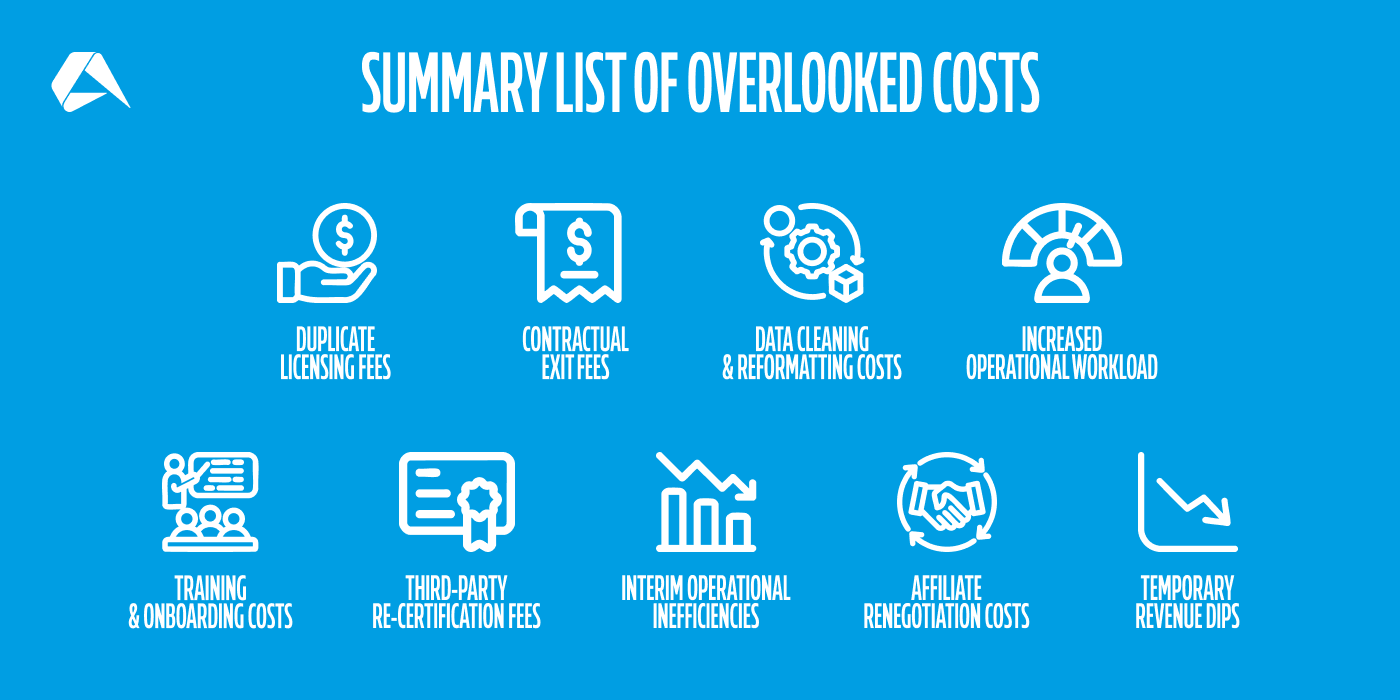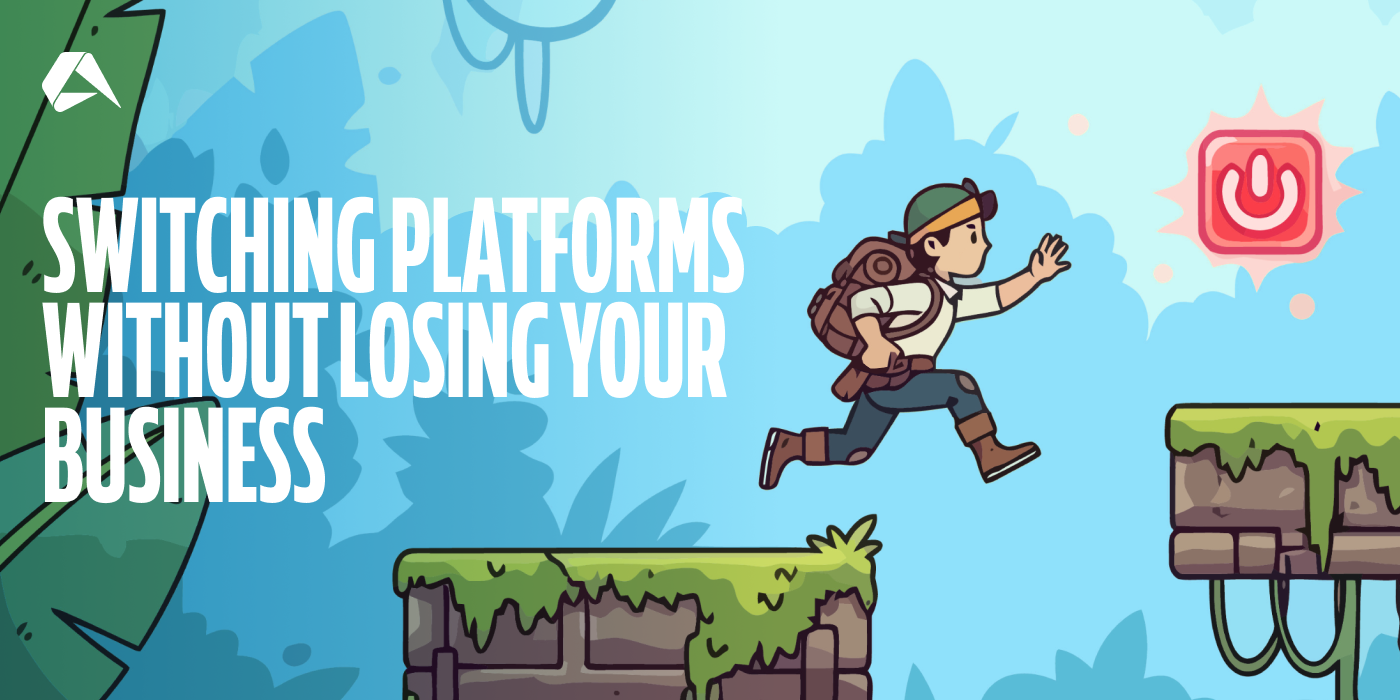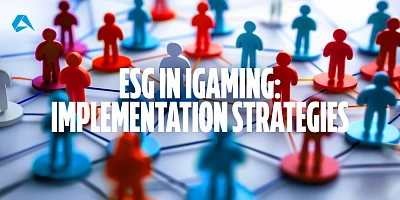Overview Switching Platforms Without Losing Your Business: A Strategic Guide to iGaming Platform Migration
iGaming platform migration is an inevitable requirement for operators aiming to overcome limitations in legacy systems, address compliance needs in new markets, or tackle operational inefficiencies. This strategic shift is far more than a simple system upgrade; it is a high-stakes business transformation that involves rebuilding the engine powering every transaction, player experience, and revenue stream.
Executed correctly, migration secures existing assets while creating foundations for significant expansion, unlocking new market opportunities and operational efficiencies.
The shift, however, carries inherent dangers. Risks span Technical Risk(data integrity, integration failures), Operational Risk (increased manual workload, staff training), and Reputational Risk (player trust erosion, SEO traffic loss). Financial and Legal risks, such as duplicate licensing fees and data cleaning costs, are often overlooked but can undermine budgets.
The majority of migration failures stem from avoidable mistakes, such as delegating the project solely to tech teams or skipping crucial sandbox testing and phased rollouts. By defining clear objectives, auditing data thoroughly, and aligning all stakeholders, operators can convert migration from a resource drain into a strategic move that enables faster market entries and stronger brand positioning.
Read the blog below for more details and discover how a well-planned migration can become your strongest strategic advantage.
Let’s be honest. Switching platforms isn’t a decision that operators take lightly. But if you’ve been in this industry long enough, you know that staying still can carry far greater risks than pushing forward.
So, whether it’s a legacy system that’s holding back your product, compliance requirements in new markets that your current platform simply can’t support, or the growing frustration of operational inefficiencies, migration eventually becomes an inevitable requirement for many operators.
But here’s the reality. Migration isn’t just about upgrading technology. In practice, it’s about protecting and securing everything you’ve built to this point while creating the foundations to expand beyond it. Done well, it opens up market opportunities, new product capabilities, and operational efficiencies that you simply can’t achieve with outdated systems. Done poorly, it risks losing the very players, revenues, and market trust that made migration necessary in the first place.
This guide takes you inside the operational, technical, and reputational risks of platform migration. But more significantly, it provides practical strategies to plan and execute your migration with confidence, converting it from a drain on resources into a strategic move for growth.
Download our comprehensive PDF guide for a practical checklist and proven migration tips and advice.
More than Simply Switching Platforms - It’s About Rebuilding Your Business Engine
Most operators view migration as a necessary upgrade, offering an opportunity to update outdated systems, introduce key features, or break free from limitations that are holding them back.
However, it's worth pointing out that when you migrate platforms, you’re not just switching software. More often than not, you’re rebuilding the very engine that powers every transaction, every player experience, and every revenue stream in your business.
This isn’t a simple swap. It’s a full-scale operational rebuild that tests the strength of your data, the resilience of your teams, and the loyalty of your players. All at the same time.
That’s why even the most well-intentioned migrations can potentially backfire. Operators often get caught off guard by hidden risks, including data integrity failures, integration breakdowns, and erosion of player trust, because they approach migration as a technical project rather than what it truly is: a high-stakes business transformation.
Recognizing migration as a full-scale operational overhaul rather than a simple upgrade is the first step toward managing it productively and decisively.
The Hidden Risks of Platform Migration
The following risks can undermine even the strongest migration strategy if they aren’t identified, planned for, and actively managed.
Potential Migration Risks
Risk Category Key Risks Technical Risks • Data migration integrity (player accounts, bet history, financial records) • CRM and third-party system integrations • Platform downtime and rollback failures • Compatibility gaps with internal tools and reporting Operational Risks • Increased manual workload during migration • Back-office delays as teams adapt • Disruption to marketing campaigns, bonus systems, and affiliate tracking • Staff training requirements for new workflows Reputational Risks • Player trust erosion from downtime or glitches • SEO traffic loss from platform or URL changes • Brand credibility damage if issues become public • Regulatory scrutiny if data is mishandled Financial & Legal Risks • Duplicate licensing fees during the overlap • Data cleaning and reformatting costs • Contractual exit fees with existing suppliers • Temporary revenue dips during the migration period
Technical Risks
Technical risks are typically the first that come to mind when planning a platform migration, but their true complexity is rarely understood until the process is underway. Moving player accounts, bet histories, and financial records from one system to another is more than a data transfer. It’s an exercise in preserving the integrity of your entire operational infrastructure. A single issue can spiral into login failures, balance discrepancies, or compliance breaches that have the potential to erode trust in an instant.
Beyond data, CRM systems, payment gateways, and third-party integrations must all be rebuilt and revalidated within the new environment, often under tight timelines that leave no room for error. Even planned downtime carries risks if rollback strategies aren’t in place. Furthermore, gaps in compatibility with internal tools, reporting methods, or legacy middleware can quickly transform migration from an upgrade into a prolonged operational crisis.
Operational Risks
Even when the technical aspects of migration run smoothly, operational risks can impact performance if not adequately addressed. During a migration, operational teams often face increased manual workloads as automated processes are reconfigured or temporarily disabled, leading to delays in player withdrawals, customer support responses, and routine back-office tasks. Consequently, staff who have been trained for years on a familiar platform can struggle to adapt quickly to new workflows, especially if migration timelines leave little room for comprehensive onboarding.
Added to this, marketing teams may also find themselves caught off guard as bonus systems, affiliate tracking links, and campaign integrations require revalidation or reprogramming within the new environment. Each of these operational setbacks can feel minor in isolation, but together, they drain focus and resources, distracting teams from what migration should enable: smoother operations, greater product control, and improved player experiences that drive the business forward.
Reputational Risks
While technical and operational risks can generally be resolved internally, reputational risks play out in public and often linger long after migration is complete. Downtime, even when planned, can erode player trust if communication isn’t handled respectfully. Login errors, missing balances, or unresponsive features, for instance, can quickly become fuel for social media complaints and negative reviews, damaging brand credibility at a time when stability should be your strongest message.
SEO performance can also take a hit if platform structures change without careful redirects and optimization, causing drops in organic traffic and affiliate conversions. But even more concerning is the regulatory aspect. A botched migration that mishandles player data or compliance reporting can trigger fines or license reviews, putting your entire market position at risk. It is no exaggeration to acknowledge that reputation is fragile in the iGaming industry, and once it is questioned, it takes far longer to rebuild than any platform launch.
Overlooked Costs Operators Don’t Always Budget For
Financial and legal risks are often overlooked in migration planning, yet they can quietly undermine even the best-executed projects. Duplicate licensing fees, for example, may arise when old and new platforms must run in parallel to ensure compliance, typically resulting in unplanned costs that strain budgets already under pressure. On top of that, contractual exit fees with existing suppliers can eat into resources before the transition even begins.
Then comes the data itself. Cleaning, reformatting, and restructuring historical records for compatibility with the new platform carries consultancy costs and diverts operational focus. Layered over these is the legal exposure. That’s to say, any mishandling of player data, breaches of data sovereignty during transfer, or incomplete records risk regulatory fines or even license reviews. Taken together, these financial and legal factors can turn what was budgeted for a strategic upgrade into an expensive operational setback.
Summary list of overlooked costs

The following costs frequently arise during platform migrations in iGaming:
Duplicate Licensing Fees
Running old and new platforms in parallel often creates unplanned dual compliance and licensing costs.
Contractual Exit Fees
Termination clauses with existing suppliers can significantly reduce available budgets.
Data Cleaning & Reformatting Costs
Preparing historical data for compatibility requires specialist consultancy time and internal operational resources.
Increased Operational Workload
Manual processes increase during migration, resulting in overtime costs and diverting staff from their core duties.
Training & Onboarding Costs
Staff must adapt to new systems, often requiring external training or dedicated onboarding time.
Third-Party Re-Certification Fees
Payment, KYC, or game providers may charge fees to integrate with your new platform.
Interim Operational Inefficiencies
Workflow slowdowns during adaptation create hidden productivity issues.
Affiliate Renegotiation Costs
Tracking disruptions may affect agreements, requiring compensation or renegotiation with affiliate partners.
Temporary Revenue Dips
Downtime or transitional disruption often leads to reduced betting activity and player deposits.
Common Migration Mistakes
The majority of migration failures do not stem from unexpected technical glitches. They result from avoidable operator decisions. These mistakes are rarely intentional, but they ultimately build risk into the process long before the first data transfer begins. Here are the most common pitfalls to watch for:
1. Treating Migration as a Purely Technical Project
Migration often gets delegated solely to tech teams, with minimal involvement from operations, marketing, or compliance. However, migrating a platform is a business transformation, not just a system upgrade. Operators who fail to align all departments early on often find themselves reworking integrations, delaying launches, and losing player trust.
2. Underestimating Player Communication Needs
Operators assume that as long as the migration is technically sound, players will adapt without issue. In reality, downtime, login changes, or new interfaces create confusion and frustration if communication isn’t proactive and transparent. Miss this, and you risk losing players for good.
3. Skipping Sandbox Testing and Phased Rollouts
A rushed launch without extensive sandbox testing leaves no room for identifying hidden data mismatches or integration failures. Equally, trying to migrate every market simultaneously amplifies operational risk. Phased rollouts with solid rollback strategies protect performance and player experience throughout the transition.
4. Failing to Align Internal Teams Early
Too often, migration plans are developed by leadership and handed down as directives, leaving operational teams underprepared for implementation. When workflows, processes, and KPIs change overnight without internal alignment, productivity drops, morale suffers, and post-migration performance fails to deliver the expected ROI.
5. Budgeting Only for Best-Case Scenarios
Many operators budget for migration based solely on supplier proposals or optimistic internal timelines. They fail to allocate contingency for delays, unexpected integration costs, dual-platform licensing, or post-launch optimization. As a result, projects run over budget and erode ROI before benefits are realized.
6. Ignoring Migration’s Strategic Potential
Operators frequently approach migration as a necessary evil rather than a strategic opportunity. By treating it purely as risk management, they miss chances to enhance product offerings, integrate better data insights, and reposition their brand in the market for growth.
Migration Planning with Minimal Risk
The table below outlines each migration action alongside its strategic purpose, providing your team with the clarity needed to manage risks effectively and ensure that your platform migration drives results rather than conflicts.
| Checklist Item | Why It Matters |
|---|---|
| Define Objectives Early | Ensures migration delivers business goals, not just technical upgrades. |
| Audit Data Thoroughly | Prevents transfer errors, login failures, and compliance breaches post-migration. |
| Align All Stakeholders | Avoids last-minute delays by ensuring all departments are prepared. |
| Choose Migration Timing Strategically | Minimises revenue loss and operational disruption. |
| Sandbox Test Everything | Identifies data or integration issues before live switch-over. |
| Plan Phased Rollouts | Reduces risk by limiting exposure to a single market or product at a time. |
| Prepare Player Communications | Maintains player trust and minimises churn during transition. |
| Maintain Dual Systems Where Feasible | Provides operational safety net during cut-over phases. |
| Ensure Regulatory Compliance | Avoids fines or licence reviews due to data transfer or structural changes. |
| Secure Migration Support from Provider | Ensures expert guidance and problem-solving throughout the execution process. |
How Altenar Minimizes Migration Risk for Operators
As a leading iGaming technology provider, Altenar understands that migration is more than a technical upgrade. In our view, it’s a strategic transition that underpins your entire business performance. That’s why our approach begins well before any data transfer takes place. We start with collaborative planning workshops to define your migration goals, assess data structures, and map out every integration connection point. Our dedicated onboarding and migration teams guide you through each stage, ensuring that data transfers maintain complete integrity while CRM systems, payment gateways, and third-party integrations are revalidated for continuity.
Phased rollouts are prioritized wherever possible, enabling markets or products to transition with minimal disruption and maximum operational efficiency. To the best of our ability, sandbox testing environments are used to uncover data mismatches or integration gaps before they ever reach your players. Throughout this process, communication remains transparent, with tailored timelines that adapt to your operational realities rather than forcing you into rigid windows. For operators, our approach throughout is designed to ensure that migration becomes an enabler of growth rather than a risk to business continuity.
Significant Migration Checkpoints
-
Collaborative strategic planning
-
Dedicated onboarding and migration teams
-
Data integrity validation at every stage
-
Extensive sandbox testing environments
-
Phased rollout options for reduced disruption
-
Transparent communication and tailored timelines
When Migration Can Be Your Strongest Strategic Move
Migration is most often framed as a risk to be managed, but for operators ready to grow, it can become one of the strongest strategic moves they’ll ever make. Switching platforms is not just about changing and upgrading technology. On a strategic level, it’s about redefining what your business can achieve.
A well-planned migration advances capabilities that outdated systems simply can’t support. New market entries become faster when compliance structures are built in from the ground up. Advanced sportsbook features, modular front ends, and tailored premium data feeds let you create experiences that differentiate your brand in competitive markets. Operational efficiencies follow, too, with intuitive back-office tools that reduce manual workloads and free your teams to focus on growth.
Beyond operations, migration can become a catalyst for repositioning your brand. Launching on a new platform with enhanced UX, smarter promotions, and intuitive betting interactions tells players you’re investing in their experience and not standing still. Moreover, it essentially signals ambition to regulators and partners, demonstrating readiness to scale responsibly.
Ready to make migration your competitive advantage?
Contact Altenar to explore how a strategic migration can strengthen operations, enhance player experience, and drive your business forward into its next phase with confidence in every market you serve.













